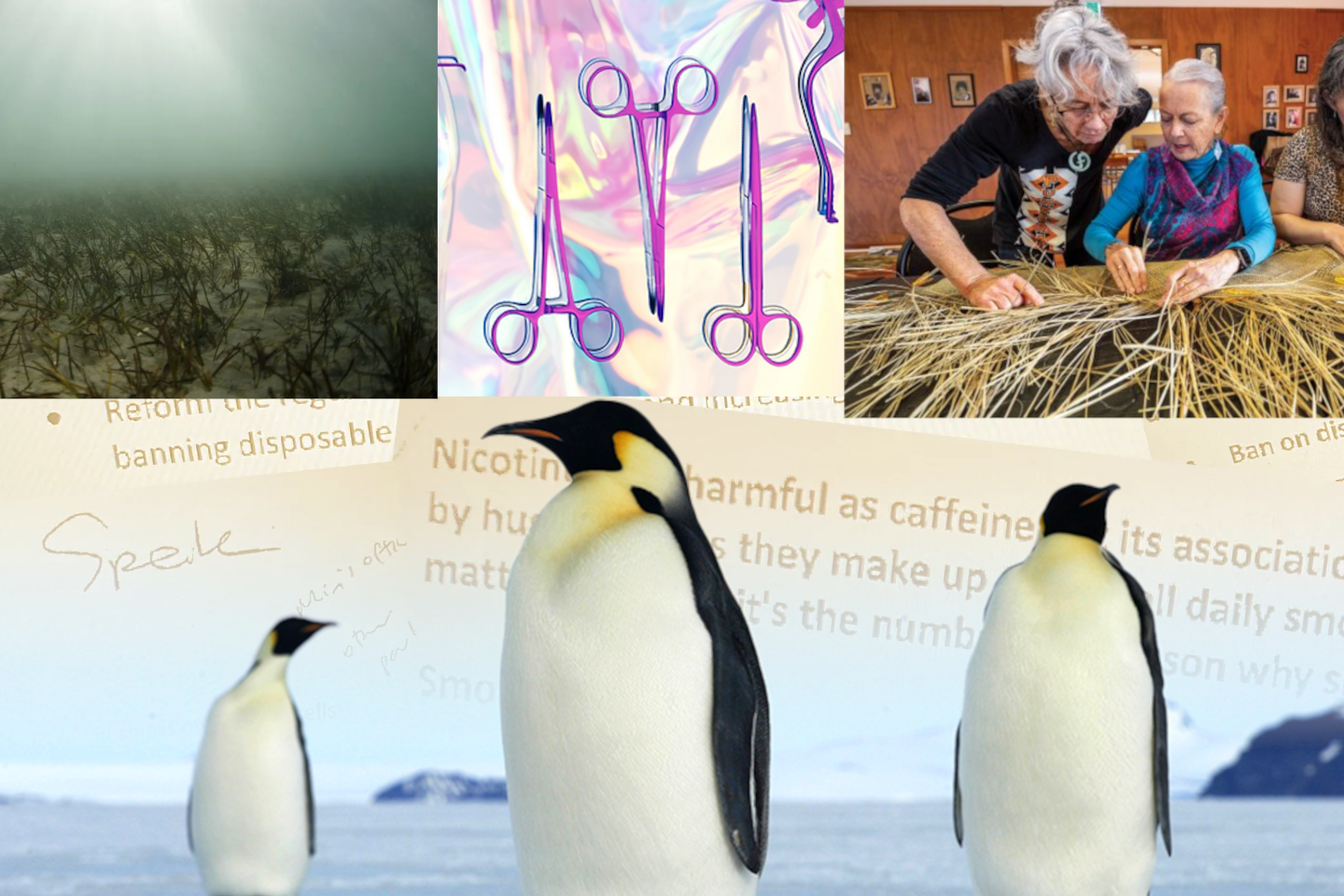Update (20 June 2024): Congratulations to Sasha Borissenko and Shanti Mathias, who won the Established and Emerging Journalist categories, respectively, at our inaugural Science Journalism Awards.
Nine finalists emerged from 58 submissions for the inaugural award ceremony. We have been blown away by the calibre of the work nominated, including magazine features, television news, podcasts, digital interactives, videos and online news.
Here are the finalists for the established and emerging journalist categories:
Established journalist:
Chewing the Facts: Going under the knife
– Sasha Borissenko, NZME
Sasha’s podcast Chewing the Facts busts popular myths about fatness, and in Episode 5 she sinks her teeth into weight loss surgery. One of the nominators said the series has gained traction among health officials, and resulted in policies being reviewed. Judges said it was a great piece of science communication and praised the careful and ethical way Sasha approached the topic.
Deep Trouble: How climate change has reached the world’s end
– Jamie Morton, NZ Herald
Record low sea ice, acidification, and a fragile ecosystem in danger – when Jamie saw the vast amount of concerning new research on the Southern Ocean he knew he had a mammoth story in front of him. Jamie said it was among the most complex topics he’s ever tackled as a science reporter but also among the most satisfying. Judges ranked this story one of the highest for creativity and innovation, and said it was an “epic effort” with “lots of meaty detail”.
Raise up the billowing sail
– Nic Low, New Zealand Geographic
In the staffroom at the British Museum’s offsite store, you have to bring your own teabags. These little details are what makes Nic’s piece on Te Rā, the sole remaining customary Māori sail, stand out. Nic tells the story of the people who brought Te Rā home to Aotearoa New Zealand, and offers a peek into all the relationship-building in the museums sector. The judges liked the way the piece opens a world to readers, and said it was beautifully written.
Smoke Signals
– Kate Newton, RNZ
Kate’s story compares notes sent from a Minister’s office to documents produced by the tobacco industry, finding a striking similarity. The nominator of this story said they had worked with many journalists, and Kate was exceptional in how careful her research was, despite having OIA requests turned down. The judges agreed this was an excellent way to cover a topic where information wasn’t forthcoming from the sources.
The stuff of life – Carbon capture in our ocean ecosystems
– Kate Evans & Claire Concannon, RNZ/New Zealand Geographic
Fiordland is a natural powerhouse for burying carbon underwater, which Kate discovers in her Voice of Tangaroa podcast. Co-presenter Claire says the episode balances a focus on the ecosystems themselves, and the human characters at the centre of the story, while trying to emphasise the hope in our ability to combat climate change. One of the judges called it an “uplifting listen with lots of atmosphere and humanity”.
Emerging journalist:
Insurance retreat: Homeowners in flood-prone areas abandoned and facing risk
– Emma Ricketts, New Zealand Listener
Emma’s piece tackles the complex topic of managed retreat, speaking to many homeowners across the Hawke’s Bay who felt their post-Gabrielle plight had fallen under the radar. The judges said the story was a great combination of individuals’ experiences of the cyclone and the broader context of how insurance works.
‘People power’ – ECan finally answers call to give dying fish water
– Eve Hyslop, The Press
When thousands of fish died in a dried up creek near Ashburton, local farmers wanted to top up the creek with irrigation water – but ran up against new rules barring them from doing so. The farmers credited media reporting as forcing authorities to pay attention and take action before the last of the water disappeared. Despite the bittersweet result, the clear impact of the story stood out to the judges.
Staring down the ‘silent epidemic’ of myopia in children
– Shanti Mathias, The Spinoff
For this story Shanti documents her travels through Auckland schools with optometrists on the Vision Bus, weaving in science around the rise of myopia rates globally. The judges were impressed with how ‘on-the-scene’ the reporting was, including the voices of school students and the team running the bus. Shanti said people have told her the story inspired them to get their kids’ eyes checked – or simply to spend more time outside.
Traditional tattooing practices in the spotlight: Workshop aims to prevent infection or tragedy
– Grace Fiavaai, NZ Herald
Grace’s story on traditional Samoan tatau profiles the beauty of ink, while delving into the risks of infection and what’s being done to prevent it. One judge declared that Grace had “some real chutzpah” to tackle the topic as a student, incorporating a lot of science alongside cultural context. Grace is a Te Rito journalism graduate, and says it was huge that she was able to bring the story to a mainstream platform and show non-Pacific readers why such stories matter.
Many thanks to our incredible judges for the 2024 awards, who’ve done an impressive and diligent job of weighing up the many excellent entries we received:
- Dr Sarah-Jane O’Connor, Centre for Science and Society, Te Herenga Waka
- Professor Ben Kennedy, winner of the 2023 Prime Minster’s Science Communication Award
- Veronika Meduna, freelance science writer, broadcaster, editor and author
The winner for each category will be announced on June 19th in Wellington.










